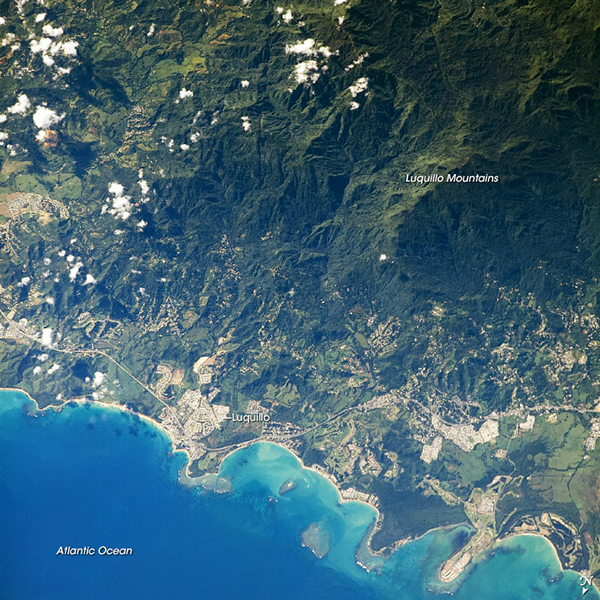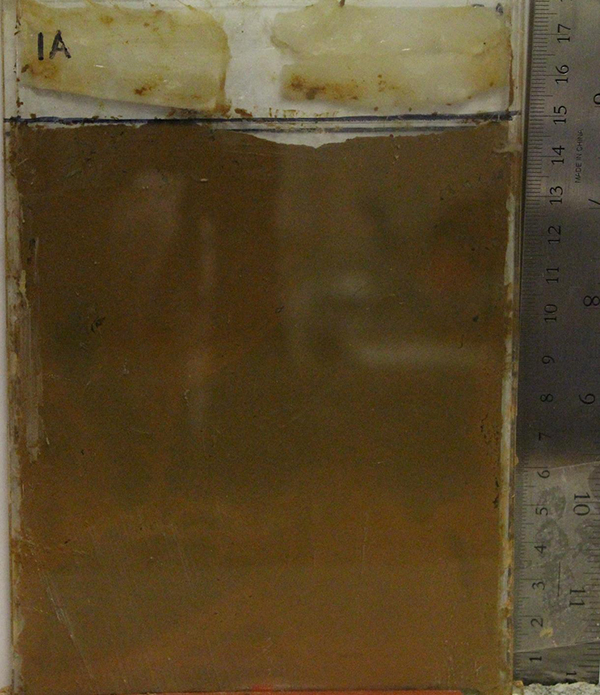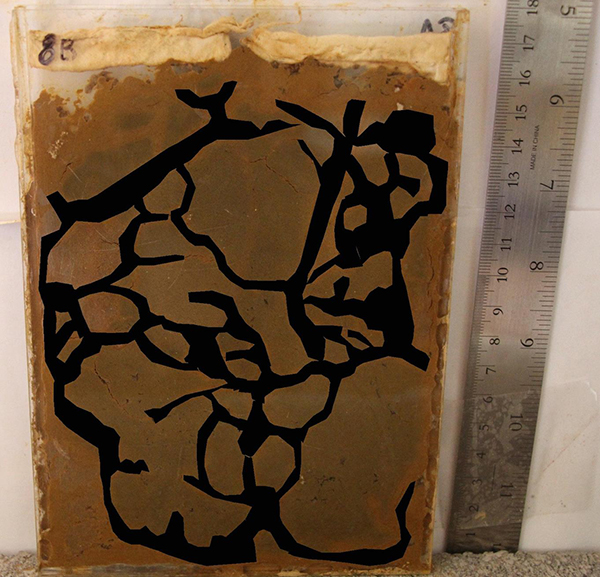
by Terri Cook Friday, November 6, 2015

Puerto Rico's Luquillos Mountains appear in this photo taken from the International Space Station in 2007. (Note that north is down in the image.) Credit: NASA
Scientific investigations sometimes take unexpected twists and turns. When Emma Harrison, a graduate student at the University of Pennsylvania, began digging trenches in the mountains of Puerto Rico to study how the soil mantle responds to rapid changes in erosion, she couldn’t help but notice the worms.
The thick Puerto Rican soils were chock-full of the wriggling creatures: endogeic worms, which spend their lives burrowing through the soil and feeding on bits of decaying organic matter underground, as well as much larger anecic worms, which in the Luquillos are typically 2 millimeters wide and as long as a human forearm. Anecic earthworms live deeper in the soil profile but build long, vertical burrows so they can feed on organic litter at the surface.
Harrison had gone to northeastern Puerto Rico’s Luquillo Mountains, which rise steeply from sea level up to 1,075 meters in elevation, to look into why erosion rates aren’t as high as it seems they should be. Uplifted between about 37 million and 28 million years ago, this range is the first barrier on the island encountered by the prevailing easterly winds, which carry moisture from the Caribbean Sea. The resulting orographic effect produces copious rainfall, exceeding 5 meters per year at higher elevations, where a dense rainforest thrives. “With the amount of precipitation [the area] gets, you should be eroding the range at a much quicker rate,” Harrison explains. Whereas erosion rates in the Luquillos range from about 0.05 to 0.18 millimeters per year depending on elevation, rates are typically much higher in other high-precipitation tropical environments, she says; the mountains of Taiwan, for example, lose between 2.2 and 8.3 millimeters per year.
At the Luquillo Critical Zone Observatory — one of 10 such National Science Foundation-funded observatories focused on studying the so-called critical zone between the treetops and the base of weathered rock — researchers like Harrison are working to understand why these mountains are still as high as they are. Intrigued by the worms’ abundance and prodigious activity at her field site, Harrison wondered whether their presence could influence weathering in the Luquillos. Previous studies had found that landslides account for most of the erosion in the lush, tropical and steep environment of the Luquillos, and that removing earthworms from an experimental plot in the mountains greatly increased surface runoff and the downhill transport of fine organic matter.

An experimental worm nest prior to noticeable burrowing by endogeic worms. Credit: Emma Harrison
What were the earthworms doing to the soil to create such a difference? Along with undergraduate Aria Kovalovich, Harrison constructed several clear earthworm nests that were thin enough to allow the team to observe worm tunneling in two dimensions. After placing endogeic worms and soil native to the Luquillos in the nests, the researchers stored them in a dark room, pulling them out once per day to photograph the worms’ progress. Using image-processing software, the researchers then quantified changes in the amounts of material excavated in the tunnels from day to day. After two weeks, they also measured the nests’ bulk densities and their permeability to water.
On average, the soil in the experimental nests was compacted by 4.3 percent, the team reported last week during the annual meeting of the Geological Society of America in Baltimore. “It’s very rare to see [levels of] compaction like that,” Harrison says. “It was really surprising; we had actually thought that there would be an increase in the volume of the soil,” she adds, because worms are often observed to churn up and aerate soils.

A worm nest after 12 days. Endogeic worm burrows are denoted with black coloration added with image processing software. Credit: Emma Harrison
There could be several reasons for the compaction, Harrison explains. First, as the earthworms burrow, they push the dirt surrounding the tunnels together, reducing pore space between soil particles. In addition, when soil particles are ingested and later excreted by worms, the particles tend to be compacted, she says. The soil is also compacted when earthworm tunnels collapse.
Based on the experiments, the researchers concluded that earthworms are significant biological agents that actively restructure the Luquillo soils, and that the worms’ tunnel networks increase the rate at which precipitation filters through the soil. This allows water to drain more rapidly from the clay-rich surface where landslides most frequently occur. The end result, according to the team’s hypothesis, is fewer landslides and a slower rate of erosion in the Luquillo Mountains.
Ultimately, Harrison says she hopes the study will stimulate new ideas about erosional processes. She also would like to expand the research to include the anecic earthworms, whose longer, straighter burrows could be even more effective conduits for draining precipitation. “A landscape is a composite of all of its component parts, including the life that lives within it,” Harrison says, adding that studying the interactions among all these components is an exciting new direction in landscape geomorphology.
© 2008-2021. All rights reserved. Any copying, redistribution or retransmission of any of the contents of this service without the expressed written permission of the American Geosciences Institute is expressly prohibited. Click here for all copyright requests.